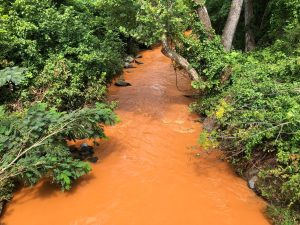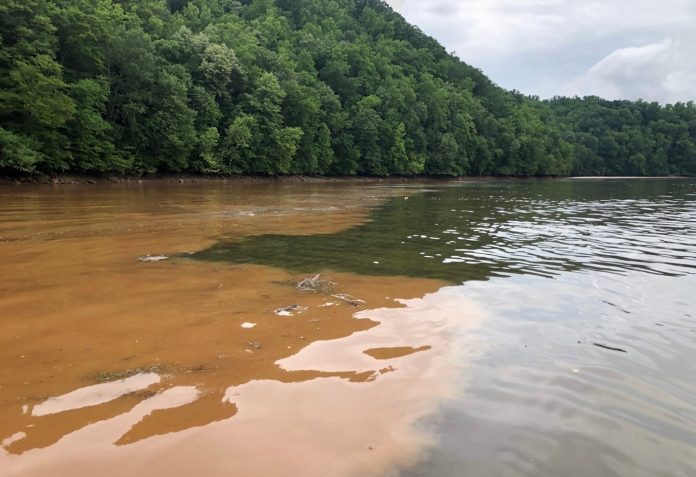Dr Thomas Shahady of the Center for Water Quality at the University of Lynchburg, outlines how E. coli and its contribution to water pollution could help improve detection strategies.
Our freshwater streams and rivers are under siege. An abundance of scientific literature warns about the dangers of water pollution and, in particular, sediment plaguing these systems. What is happening? Why is this occurring? Why are we not stopping it?
I believe it is our approach. We sample water and draw upon causal relationships. We look at land use surrounding at a particular study site and assume that the water running over surrounding land generates resultant problems. We point to agriculture dumping tonnes of nutrients or urbanisation generating excessive water flow and eroding stream banks.
Sewage, livestock, and failing septic systems flowing into streams cause health concerns and outbreaks. All these concerns exist, but are they the primary problem? I suggest they are not.
The presence of E. coli in freshwater
E. coli is a ubiquitous bacterium used as an Indicator Microorganism (IM). Studies suggest that as IMs increase, so does the likelihood of disease-bearing pathogens in water.
But this relationship is causal. The mechanisms producing elevated E. coli in freshwater may be more emblematic of water pollution and, in particular, sedimentation than any elevation in health concerns.
Sedimentation is understood as a wicked problem’ without any discernable solution. It is a fundamental part of the landscape where stream channels carve and meander through time and over vast stretches.
Streams are known to accumulate fine sediments, and the study of stream morphology or shape is the science of understanding the sediment–stream channel relationship.
But at this point in history, streams are simply overwhelmed with sediment and with increasing loading as land is disturbed, and stream channels beckon for any solution to return them to a greater sense of normalisation.
Issues with pollutant testing methods
This is where the idea of E. coli as a surrogate is suggested. Understandably, this bacterium is a good indicator species for water health as it associates with gut flora from warm-blooded animals and correlates well with sewage and animal faecal wastes.
But it is not a benign organism once released into the environment. Studies have provided good evidence that not only does it associate with sediments, but it thrives there even multiplying with the ability to generate very high levels.
Once disturbed or released, it will cause very high readings of water pollution well above any suggested regulatory level.
Therefore, streams carrying an ever-burgeoning sediment load with an abundance of E. coli growing and thriving in the sediments may now overwhelm us as an IM. We need to ask the questions to determine how much E. coli observed in our testing is generated in the stream itself.
How much is supplanted from external sources and then measured in the system simply when the sediment is disturbed? How are we supposed to discern land use impact or septic tank problems in a stream if the system is overwhelmed with our best indicator microorganism?
Understanding the use of E. coli as a surrogate
While studies are ongoing working to discern between the instream and external loading of these sediments, external and internal E. coli is not easily understood. This is particularly concerning as this problem may mask an ability to pinpoint the exact location of pollutants.
Furthermore, it may suggest greater contamination exists in an area (such as agriculture) when, in reality, the high readings may reflect build-up in the area due to sediment and bacteria collecting in the area.

E. coli may be a better expression of sedimentation than any other freshwater problem. Arguably, billions of dollars are spent worldwide to improve water quality and lower E. coli to acceptable levels.
Stream restoration is ongoing and best management practices are another industry selling stream improvements. What if the system is so bogged down with legacy sediment that all of this effort will not be realised until this sediment is flushed out in the oceans? Are the streams even possible to cleanse as ever more sediment is continually added through land disturbance? How can we decide what is effective if we cannot measure it?
Perhaps overwhelming concentrations of E. coli in streams are telling us we can’t—we have hit a point in time when there is a level of degradation at which improvement is fleeting and won’t be realised for many more generations.
Gauging how water is responding to clean up efforts
Environmental improvements to tackle water pollution are often competing with each other. For example, the overwhelming movement to remove dams to allow rivers to return to a more natural pattern is also unleashing decades of trapped sediment.
Fencing cattle and land improvements to minimise erosion can be offset by developing farmland into sub-developments. As we work on improvements in one area of the river, it is getting worse somewhere else. The overwhelming sedimentation demonstrates this plague on a healthy stream.
E. coli may be the measure to gauge how the river is responding.
Even molecular techniques are difficult to discern. While Bacteroides is a good source indicator, these tests are expensive and do not identify the bacteria multiplying in the sediment as it does not discern between dean and living source genetic material. Hence, you may have strong increases in E. coli without any concurrent source identification.
If the predominant source of bacteria is the river itself, we have lost the ability to monitor for contamination. Rivers need to cleanse themselves of excessive sedimentation to improve these techniques, helping us pinpoint pollutant sources and clean them up.
Streamlining the water recovery process
I believe an evolution needs to occur in our use of E. coli indicators.
In highly impacted watersheds, this test demonstrates sedimentation, and excessive readings suggest excessive sedimentation. We can track improvements or flushing by observing the lowering of E. coli levels through time. In many instances, rivers just need time to recover.
Once a river or stream has hit a point of recovery, this test will allow us to pinpoint areas of concern and needed improvement.
However, this will only occur when the river has improved, and sediment has been flushed through the system.
This is why this test is so important—it can show the level of improvement over time and then fine tune our restoration efforts.
It truly is an indicator, and when we expand our thinking toward what it is actually indicating, we can push toward much-needed improvements in water pollution strategies.









